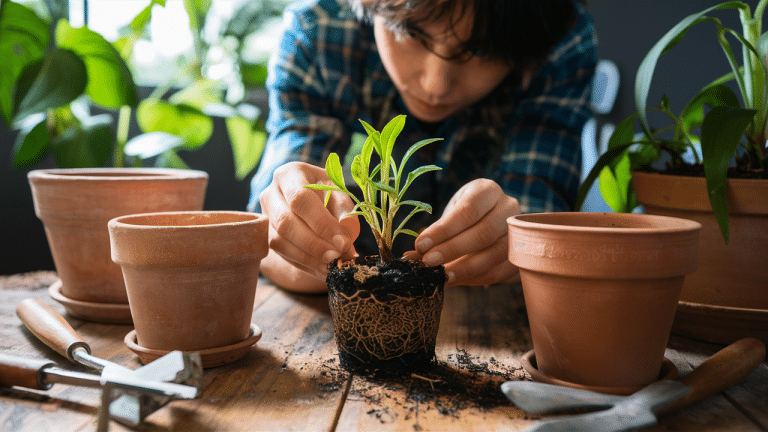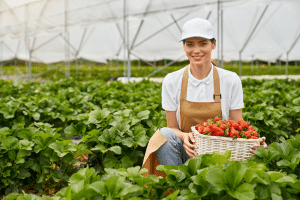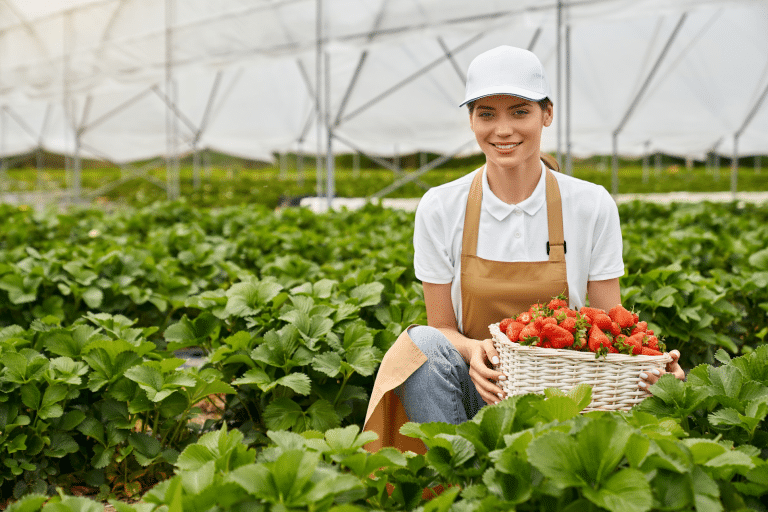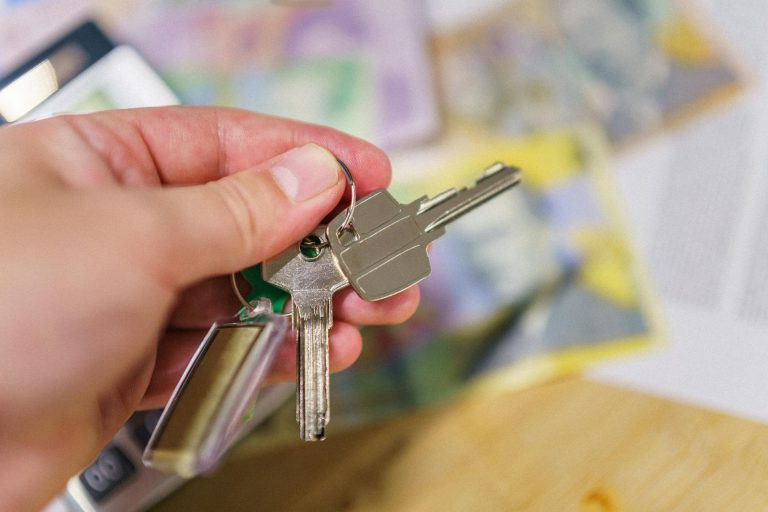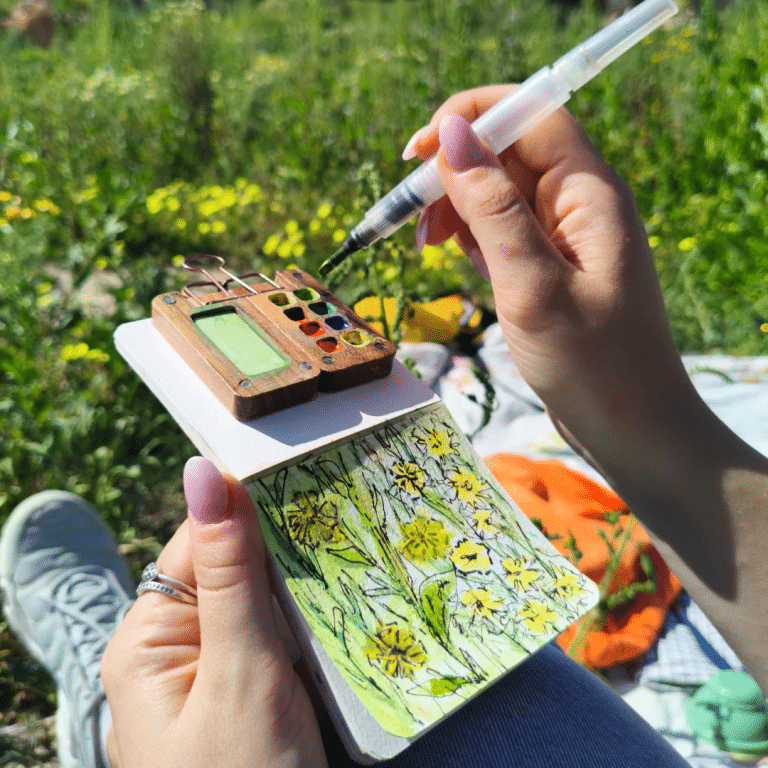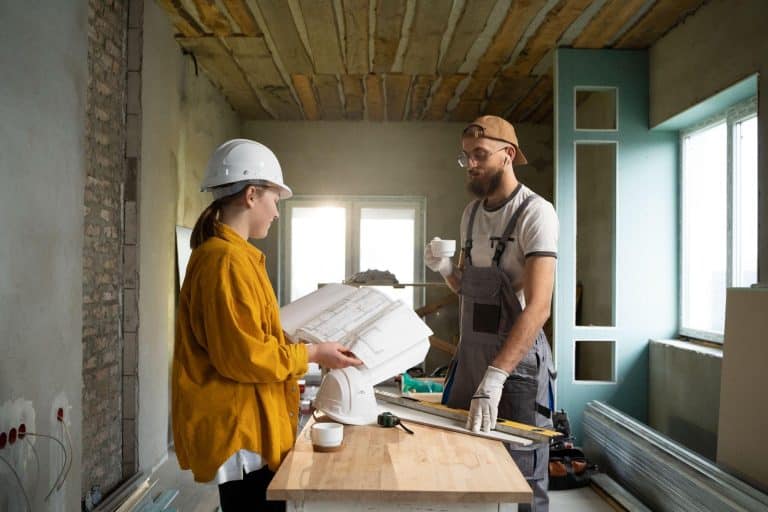Are you tired of plants that struggle, wilt, or die despite your best care? The secret might be in your pot size. In this article, I’ll show you exactly how to match plants with the right containers using easy-to-follow charts and tips.
Last month, I killed my favorite basil plant by keeping it in a tiny pot for too long. The roots had nowhere to grow! That mistake taught me the importance of proper container sizing.
I’ve tested these container guidelines with hundreds of plants, and the right pot can make the difference between struggling and thriving plants.
Whether you’re growing herbs on a windowsill or vegetables on a patio, this complete container size guide will solve your plant sizing problems once and for all.
No more guessing or wasted money on plants that fail to thrive!
What Is a Plant Container Size Chart?
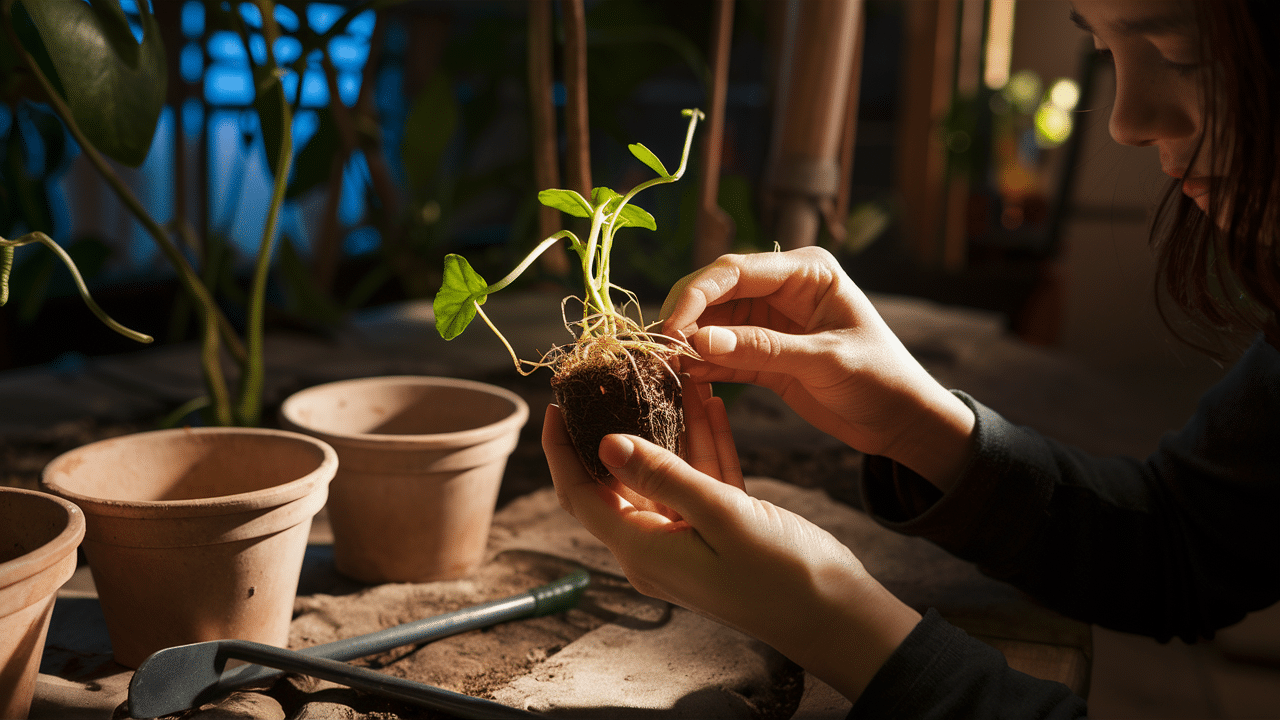
A plant container size chart is a simple guide that helps you pick the correct pot size for different plants. It displays pot sizes (usually by diameter), the amount of soil they hold, and the types of plants that work best in each size. Think of it as a matching tool that pairs your green friends with their ideal homes.
When I first started gardening, I grabbed whatever pots I had. Big mistake! Using this chart saves time, money, and keeps plants happy.
Why the Right Container Size Is So Important
The right pot size affects everything about your plant’s health:
- Root health – Roots need space to grow and access water and nutrients
- Plant stability – Too small a pot can make tall plants tip over
- Water needs – Small pots dry out fast; huge pots stay wet too long
- Growth potential – Plants can get “root bound” and stop growing in small containers
I noticed my pepper plant looked sad and stopped growing new fruit. After moving it to a bigger pot, it perked up within days! The right pot makes a huge difference.
Basic Container Size Chart
Here’s a simple chart I use for most of my plants:
| Pot Diameter | Approx. Volume | Good For |
|---|---|---|
| 4 inch | 0.25 gallon | Herbs, seedlings |
| 6 inch | 0.5 gallon | Lettuce, basil |
| 8 inch | 1 gallon | Small flowers |
| 10 inch | 2.5 gallons | Peppers, bush beans |
| 12 inch | 5 gallons | Tomatoes, cucumbers |
| 16+ inch | 10+ gallons | Trees, shrubs |
When I started my herbs on the windowsill, the 4-inch pots were perfect for getting them going. As they grew, I moved them up to 6-inch pots and they really took off!
How to Match Pot Size to Plant Type
Matching plants to pots isn’t hard once you know some basics:
- Root structure matters – Plants with deep roots (tomatoes, carrots) need taller pots
- Consider mature size – A tiny seedling will get much bigger, so plan ahead
- Growth rate counts – Fast-growing plants need more room sooner
For example, I grow mint in a pot that is bigger than you might think (8 inches) because it grows so quickly. My succulents stay in smaller pots because they grow slowly and like tight spaces.
Pro tip: For most plants, pick a pot that’s 1-2 inches wider than the root ball when repotting.
Signs Your Pot Is Too Small (Or Too Big)
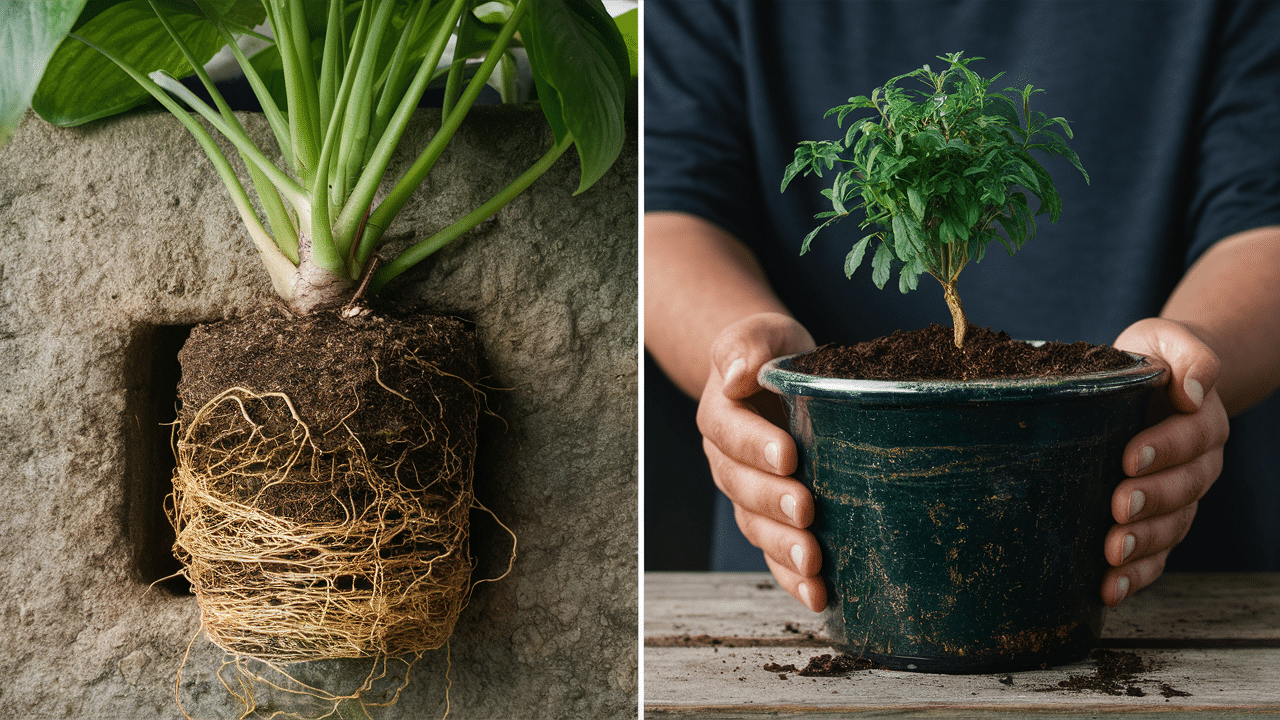
Plants can’t talk, but they do send clear signals when their homes aren’t right. I’ve learned to spot these warning signs over the years of container gardening. Catching these symptoms early can save your plants from stress and help them return to healthy growth.
Too Small:
- Roots growing out of drainage holes
- The plant dries out very quickly
- Stunted growth
- Wilting despite watering
- Pot tipping over easily
Too Big:
- Soil stays wet for days
- The plant looks tiny in comparison
- No new growth for weeks
- Droopy leaves despite the moist soil
Last year, my spider plant was yellowing even though I watered it carefully. The problem? Its roots were so packed that water couldn’t reach them all. A bigger pot fixed it within weeks.
Types of Containers
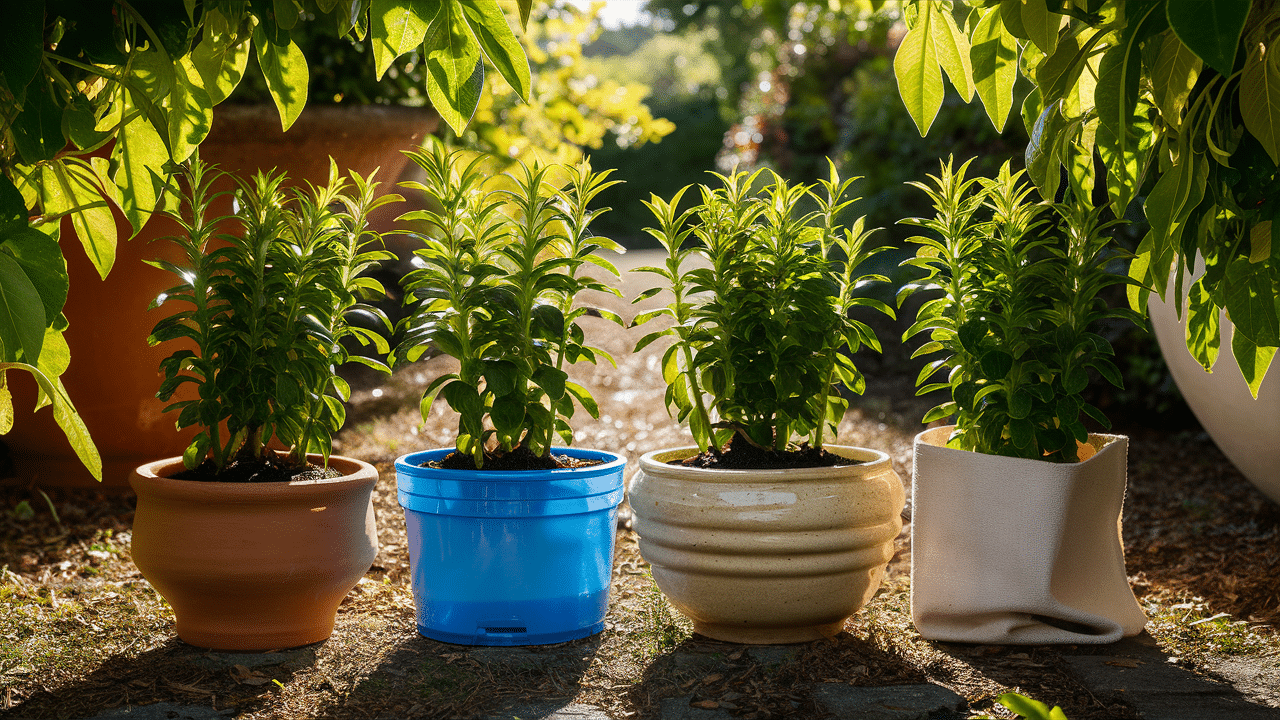
The pot material can be just as important as the size. Different materials interact with soil and water in unique ways that affect plant health.
Terracotta Pots
Terracotta pots are made from natural clay and have a distinctive orange-brown color. They’re porous, allowing air and moisture to move through the walls. This breathability helps prevent root rot in plants that hate soggy soil. I find terracotta perfect for succulents, cacti, and herbs like rosemary and thyme. One downside: they break easily if dropped and can crack in freezing temperatures.
Plastic Containers
Plastic pots are lightweight, affordable, and retain moisture much longer than terracotta. This makes them ideal for thirsty plants or if you tend to forget watering. My ferns and peace lilies thrive in plastic because they like consistent moisture. These pots come in endless colors and styles, though they can look cheap compared to other materials.
Ceramic Planters
Ceramic containers offer the best of both worlds: they’re less porous than terracotta but more breathable than plastic. I use them for statement plants because they come in beautiful designs and glazes. The extra weight makes them stable for top-heavy plants like monstera or fiddle-leaf figs. Just be careful – they’re expensive and can shatter if dropped.
Fabric Grow Bags
Fabric pots are my secret weapon for vegetable growing. These breathable bags prevent roots from circling and instead “air prune” them, creating denser, healthier root systems. My tomatoes grow much better in fabric pots than traditional containers. They dry out quicker than other materials but significantly improve air flow to roots, which most plants love.
Indoor vs. Outdoor Container Sizes
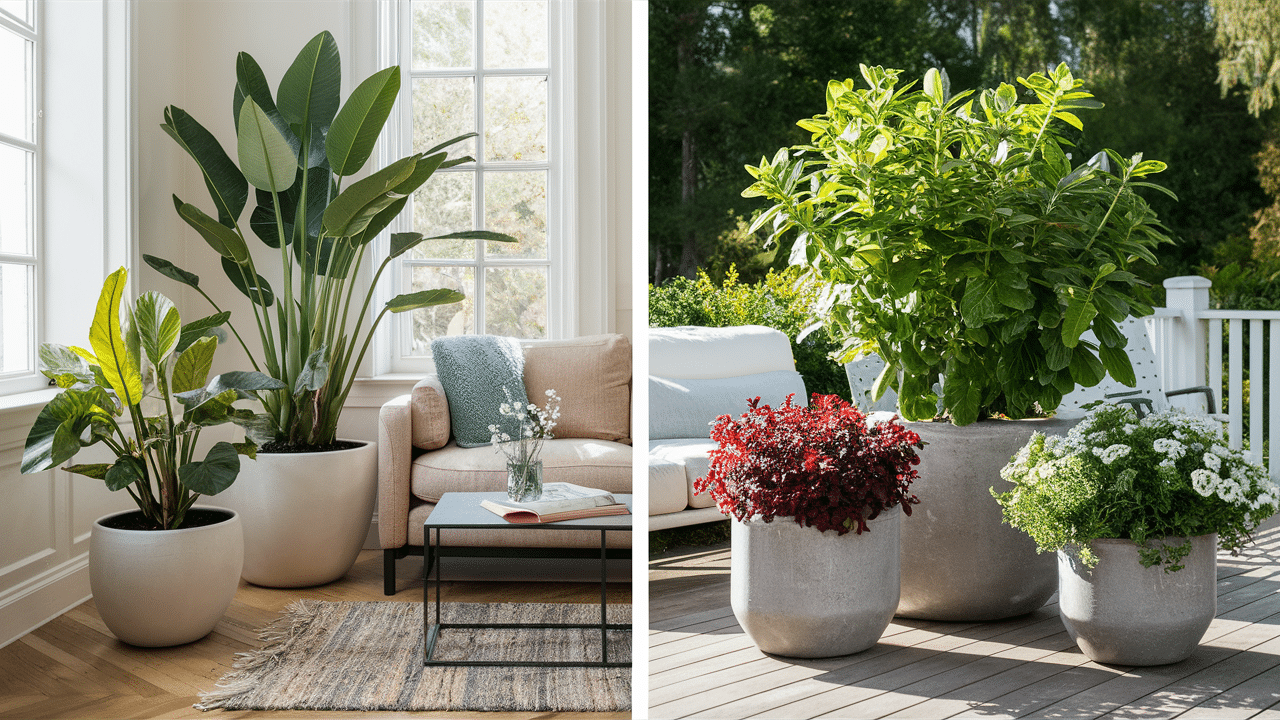
Indoor and outdoor plants have different needs when it comes to container sizes.
Indoor plants typically need smaller pots due to limited space in homes and apartments. When choosing pots for indoor plants, I always consider how the container will look in my space – the visual balance matters. A tiny plant in a huge pot looks odd, while a massive plant in a small container seems cramped. Weight is another important factor for indoor containers, especially for plants on shelves or upper floors, where structural support could be an issue.
Outdoor containers can usually be much larger because garden spaces offer more room. I’ve found that bigger pots have significant advantages outdoors – they dry out much more slowly during hot summer days, meaning less frequent watering. Larger outdoor containers also provide better stability in windy conditions, preventing taller plants from toppling over. The extra soil volume gives roots more space to spread out and access nutrients.
My indoor pothos looks perfect in a 6-inch hanging pot, but my outdoor version thrives in a 10-inch pot where it can spread out and handle the more extreme weather conditions. The same plant often needs different container sizes depending on whether it lives inside or outside.
Tips for Repotting
When it’s time to size up:
- Choose a pot 2-3 inches larger in diameter
- Water the plant a day before repotting
- Gently loosen bound roots before placing them in new soil
- Don’t pack soil too tightly
- Water thoroughly after repotting
I always repot in the early morning or evening to reduce stress on the plant.
Common Mistakes to Avoid
These mistakes cost me plants before I knew better:
- Skipping too many sizes – Moving from a 4-inch to a 12-inch pot can shock a plant
- Ignoring drainage holes – Every pot needs them!
- Using garden soil in containers – It compacts and doesn’t drain well
- Repotting when a plant is flowering – Wait until it’s done
- Overfilling with soil – Leave 1-2 inches at the top for watering space
Printable Plant Container Size Chart (Simple & Handy)
I’ve created a simple chart you can print and keep in your garden shed or kitchen drawer. It covers the most common houseplants and vegetables, making pot selection quick and easy.
| Plant Type | Small Size (4-6″) | Medium Size (8-10″) | Large Size (12″+) |
|---|---|---|---|
| Herbs | Thyme, Cilantro, Chives, Mint (start) | Basil, Rosemary, Oregano, Parsley | Sage, Mint (mature), Bay Laurel |
| Leafy Greens | Microgreens, Baby Lettuce | Spinach, Full-sized Lettuce, Kale | Swiss Chard, Collards, Cabbage |
| Vegetables | Seedlings only | Peppers, Bush Beans, Radishes | Tomatoes, Cucumbers, Eggplant, Zucchini |
| Houseplants | African Violet, Succulents, Small Cacti | Pothos, Spider Plant, Peace Lily | Monstera, Fiddle Leaf Fig, Rubber Plant |
| Flowers | Pansies, Violas, Primrose | Geraniums, Petunias, Marigolds | Sunflowers, Dahlias, Roses |
| Starting Size | Seeds, Cuttings, Tiny Transplants | Small established plants | Medium established plants |
Tip: Laminate it or put it in a plastic sleeve to keep it clean from soil and water!
Quick List of Best Pot Sizes for Common Plants
Not sure where to start? I’ve tested these sizes in my garden and found they provide the right balance between space efficiency and healthy growth. Use this as your starting point and adjust based on your specific growing conditions.
Herbs
- Basil: 6-8 inches
- Mint: 8-10 inches (it spreads!)
- Thyme: 4-6 inches
- Rosemary: 8-12 inches (gets big)
Vegetables
- Tomatoes: 12-16 inches (5+ gallon)
- Peppers: 10-12 inches
- Lettuce: 6-8 inches
- Carrots: 10-12 inches deep
- Zucchini: 16+ inches (needs space!)
Houseplants
- Pothos: 6-8 inches
- Snake Plant: 8-10 inches
- Peace Lily: 10-12 inches
- Spider Plant: 6-8 inches
- Fiddle Leaf Fig: 14+ inches
Conclusion
Using the right container size is a game-changer for plant health. I’ve seen dramatic improvements in my garden by simply matching plants to proper pots. Your plants will thank you with stronger growth, better blooms, and more harvests.
The container size chart in this guide gives you a solid starting point. Pay attention to how your plants respond, and don’t be afraid to adjust. Remember that roots need room to breathe and grow.
I’ve made plenty of pot-sizing mistakes in my gardening journey. Now I know better, and so do you! Give your plants the right-sized homes, and watch them transform from merely surviving to actively thriving.
Start seeds in small cell trays or 2 to 3-inch pots, then move seedlings to 4-inch pots once they have true leaves. This gradual sizing up helps develop strong root systems.


